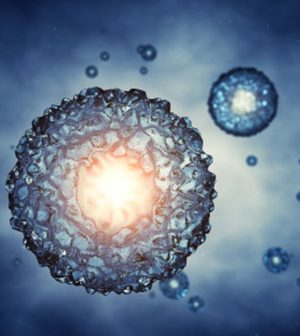- Strengthening Your Relationship: Practical Strategies
- Skip Storing This Everyday Product in the Fridge Door
- Green Tea + B3 Pairing May Boost Brain Health
- Navigating Your Midlife Crisis: Embracing New Possibilities
- City Raccoons Showing Signs of Domestication
- Mapping the Exposome: Science Broadens Focus to Environmental Disease Triggers
- One Week Less on Social Media Linked to Better Mental Health
- Your Brain Changes in Stages as You Age, Study Finds
- Some Suicide Victims Show No Typical Warning Signs, Study Finds
- ByHeart Formula Faces Lawsuits After Babies Sickened With Botulism
Scientists Create Monkey Embryo From Stem Cells

Scientists have created an embryo-like structure using monkey embryonic stem cells for the first time, part of an effort to better understand early human development and organ formation.
The researchers created the structures in a lab in China and then transferred them into the uteruses of female monkeys, according to a report published April 6 in the journal Cell Stem Cell.
The structures were able to implant in the uteruses and elicit a hormonal response similar to pregnancy, the researchers reported.
Little is known about how human embryos form and how organs develop in the womb, said study co-author Zhen Liu of the Chinese Academy of Sciences (CAS), in Shanghai.
“Because monkeys are closely related to humans evolutionarily, we hope the study of these models will deepen our understanding of human embryonic development, including shedding light on some of the causes of early miscarriages,” Liu said in a journal news release.
His team exposed monkey embryonic stem cells to a number of growth factors in a cell culture, inducing the stem cells to form embryo-like structures.
The embryo-like structures, called blastoids, appeared similar in form to natural blastocysts when examined under a microscope. Blastocysts are the structures that eventually become an embryo in mammalian development.
As they developed in the lab, the blastoids began to develop in ways similar to natural embryos. Genetic sequencing revealed that the different types of cells in the structures had similar gene expression patterns to cells found in natural blastocysts and embryos.
The blastoids were then transferred into the uteruses of eight female monkeys, and actually implanted in three of the monkeys. The implantation caused the monkeys to release hormones normally associated with pregnancy, and the blastoids also formed early gestation sacs that typically develop early in pregnancy to enclose an embryo.
However, the structures did not form fetuses and disappeared after about a week.
“This research has created an embryo-like system that can be induced and cultured indefinitely,” said study co-author Quian Sun, also of the CAS. “It provides new tools and perspectives for the subsequent exploration of primate embryos and reproductive medical health.”
The investigators plan to further develop the system of culturing embryo-like structures from monkey cells. While they acknowledge the ethical concerns surrounding their research, the researchers noted that these blastoids are very different from natural embryos and cannot fully develop.
More information
The Mayo Clinic has more about early fetal development.
SOURCE: Cell Stem Cell, news release, April 6, 2023
Source: HealthDay
Copyright © 2025 HealthDay. All rights reserved.










